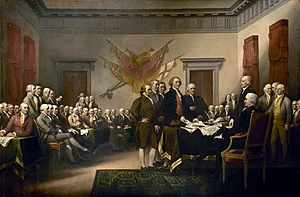We’ve all been to places that were “heavy’ not just with history, but the ghosts of men and women who have gone before us.
I suppose the Alamo would have been such a heavy place at one time, and maybe all the time for a Texan. But the way in which the park services herd people and hype a place these days make it almost impossible to get a sense of the time when those events took place.
The Marine Corps Museum at Quantico is one nearby exception.
And the USS Arizona in Pearl Harbor was that way in 1973. So was Bataan, which I visited, and walked part way, in 1975. It was still just a two-lane highway running the length of the peninsula , where 75,ooo US and Filipino sick and weak POW’s were marched, and where many died, often shot by the side of the road.
But for ghosts, and the weight of remembrance, it was Corregidor, a small island in the middle of Manila Bay, which held out against the Japanese until May, 1942. I had the island almost to myself for three hours then.
Today, the island is a standing memorial to that seige, the bombed out buildings standing unchanged as they were in ’42.
But thanks to Hollywood, most of America remembers the catacombs of underground tunnels where most of the military staff stayed during the endless bombardment of the island by the Japanese from the mainland.
These tunnels were also where the nurses lived and worked.
This is what their hospital looked like.
Around 6o Army and civilian nurses were at Bataan and Corregidor, and most ended up in camps to sit out the war.
They weren’t the first out. When the Philippines were evacuated in those early years, it wasn’t women and children first, but rather key personnel, those who could go out and train, then come back later, as they did in 1945.
That’s why the film “They Were Expendable” was so important. This is just a 7-minute clip of what, for the most part, was an action-packed film.
Somehow Donna Reed, as well as Claudette Colbert and her nurses in “So Proudly we Hail!” (1943) came to represent not just the courage of our women in war, but what we were all fighting for. And they represented those millions of wives, mothers, sisters, daughters who served by sitting home and waiting.
I recommend two great films about that as well, “Since You Went Away” (1944) and “Mrs Miniver” (1942).
I was never one for watching shoot-’em ups during the observance of Memorial Day. June 6th is just around the corner. And there’s always July 4th and November 11.
Memorial Day is for “rememberin’ and reflectin’,” and yes, I am quoting Herman Cain here, and yes, he was talking about another thing altogether. And yet, those two sentiments are perfectly joined for indeed, this is why we fight. And the only way we can fight is to at least one or two days a year, set our jaws a different way.






